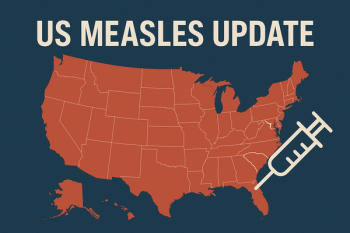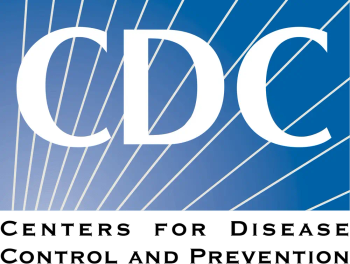Amidst looming funding cuts coming from the US federal government to international vaccine programs, as well as misinformation, population growth, and humanitarian crises, the World Health Organization (WHO), UNICEF, and Gavi have publicly stated these factors could lead to millions of children, adolescents, and adults being at an increased risk for vaccine-preventable diseases.1
A recent WHO rapid stock take with 108 country offices of WHO—mostly in low- and lower-middle-income countries—shows that nearly half of those countries are facing moderate to severe disruptions to vaccination campaigns, routine immunization and access to supplies due to reduced donor funding. Disease surveillance, including for vaccine-preventable diseases, is also impacted in more than half of the countries surveyed.1
In March, the US State Department detailed its planned cuts to foreign aid, and as part of that, it decided to cancel its over $1 billion grant to Gavi.2 The organization is a public-private partnership that helps vaccinate more than half the world’s children against some of the deadliest diseases. Gavi brings together developing country and donor governments, the World Health Organization, UNICEF, the World Bank, the vaccine industry, technical agencies, civil society, the Gates Foundation, and other private sector partners.2
“Vaccines have saved more than 150 million lives over the past five decades,” WHO Director-General, Tedros Adhanom Ghebreyesus, PhD, said in a statement. “Funding cuts to global health have put these hard-won gains in jeopardy. Outbreaks of vaccine-preventable diseases are increasing around the world, putting lives at risk and exposing countries to increased costs in treating diseases and responding to outbreaks. Countries with limited resources must invest in the highest-impact interventions – and that includes vaccines.”1
According to Gavi, its vaccine programs have immunized 1.1 billion children through routine programs; prevented an estimated 18.8 million future deaths. In addition, 1.9 billion vaccinations have been administered through preventative campaigns and $250 billion in economic benefits have been estimated for participating countries.3
The US is one of the 3 largest governmental donors to Gavi, along with the United Kingdom and Norway.3 This loss of funding will greatly impact global vaccination efforts.
What You Need to Know
WHO, UNICEF, and Gavi are sounding the alarm over reduced international funding—especially from the U.S.—to vaccine programs, which is already disrupting immunization services and disease surveillance in nearly half of low- and lower-middle-income countries.
There has been a global resurgence of measles and whooping cough, with cases rising dramatically in 2023–2025. Measles cases alone surged to over 10 million globally in 2023, and pertussis cases in the U.S. are on track to hit record highs since the vaccine’s introduction.
The cancellation of over $1 billion in U.S. funding to Gavi and other international cuts threaten to undo decades of success—Gavi alone has helped immunize 1.1 billion children and prevent nearly 19 million deaths.
A Resurgence of Measles and Pertussis (Whooping Cough)
Globally, measles cases reached an estimated 10.3 million in 2023, a 20% increase compared to 2022, according to WHO.1 The agencies warn that this upward trend likely continued into 2024 and 2025, as outbreaks have intensified around the world. In the past 12 months, 138 countries have reported measles cases, with 61 experiencing large or disruptive outbreaks—the highest number observed in any 12-month period since 2019.1
Earlier today,Contagion reported there were 884 cases of measles in the US as of April 25. In 2024, there were 285 cases reported, and in 2023, 59 cases. This suggest higher number of families choosing not to vaccinate their children, which is a large majority of the cases. Of the 2025 cases, 820 (93 percent) are linked to 11 outbreaks, compared to 69 percent outbreak-associated cases in 2024.4 In 2024, the burden is especially worse in a few select countries In Europe. 35,212 measles cases were reported across the European Union (EU)/ European Economic Area (EEA). This up substantially.4
Whooping cough is another example of a vaccine-preventable disease seeing large increases in the US. In 2024, there were 35,435 cases of whooping cough.5 This is the highest number since 2012 when there were 48,277 cases.6 Last year, 10 people died—6 of them were under 1 year of age.5
Through the first 3 months of this year, the US has reported 6600 cases of whooping cough, more than 4 times the number at the same point last year and 25 times as many as had been reported at the same point in 2023. And if the current trend continues, the country will be on course for the highest number of infections since vaccination was introduced in 1948.7
References
1. Increases in vaccine-preventable disease outbreaks threaten years of progress, warn WHO, UNICEF, Gavi. WHO. April 24, 2025. Accessed April 29, 2025.
https://www.who.int/news/item/24-04-2025-increases-in-vaccine-preventable-disease-outbreaks-threaten-years-of-progress--warn-who--unicef--gavi
2. Gavi supports Côte d'Ivoire's largest HPV vaccination campaign targeting over 3 million girls. Gavi. April 7, 2025. Accessed April 29, 2025.
https://www.gavi.org/news/media-room/gavi-supports-cote-ivoires-largest-hpv-vaccination-campaign
3. Gavi’s Impact. Gavi. Accessed April 29, 2025.
https://www.gavi.org/
4. Abene S. As US Measles Cases Rise to 884, the ECDC Reports Over 35,000 Infections in 2024. Contagion. April 29, 2025. Accessed April 29, 2025.
https://www.contagionlive.com/view/as-us-measles-cases-rise-to-884-ecdc-reports-over-35-000-infections-in-2024
5. 2024 Provisional Pertussis Surveillance Report. CDC. Accessed April 29, 2025.
chrome-extension://efaidnbmnnnibpcajpcglclefindmkaj/https://www.cdc.gov/pertussis/media/pdfs/2025/01/pertuss-surv-report-2024_PROVISIONAL-508.pdf
6. Pertussis Cases by Year (1922-2023) CDC. April 24, 2025 Accessed April 29, 2025.
https://www.cdc.gov/pertussis/php/surveillance/pertussis-cases-by-year.html
7. Dyer O. Whooping cough: Cases soar in US. BMJ. 2025;389:r704. Published 2025 Apr 8. doi:10.1136/bmj.r704




















































































































































































































































































